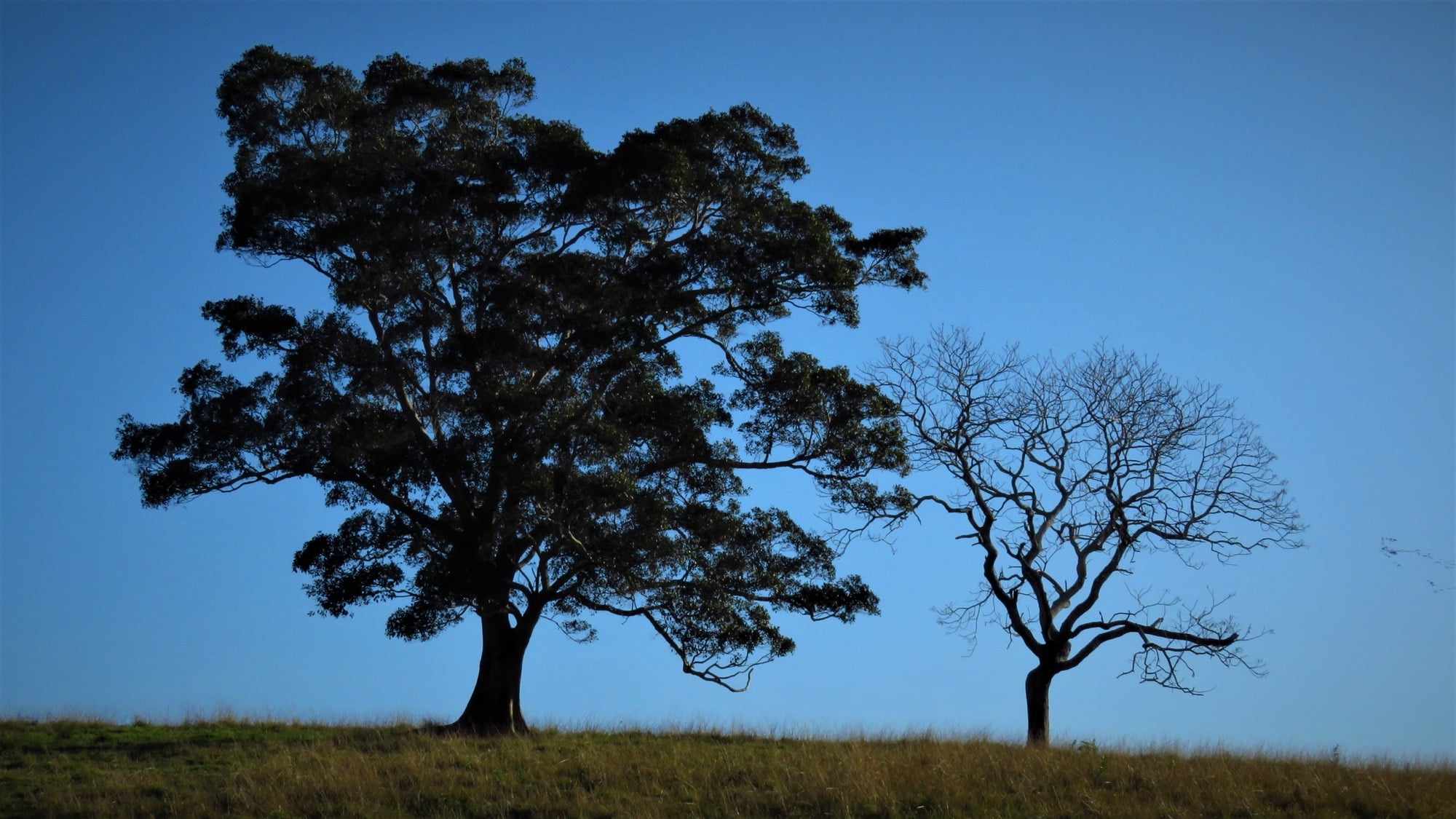Paddock Tree Regeneration Project
What is a paddock tree?
The name says it all – a tree, usually a large one, isolated in the middle of a paddock – one of the last remnants of the original forests that covered the land. Although generally alone in the landscape, a paddock tree may also have a few smaller trees clustered around it, or even be in the middle of a small patch of bush or scrub. The early Europeans who cleared vast areas for farmland 100-150 years ago generally left a few of the larger trees for shade, these trees may have been hundreds of years old already, and they are the last of their kind across our modern day agricultural landscape.
The importance of paddock trees to both the agricultural and natural environment cannot be underestimated. They are keystone features in the landscape and their ecological importance is disproportionately large compared to their numbers and area of cover. Studies have shown that even a small increase in the number of trees in an agricultural landscape markedly increases the number of species present.
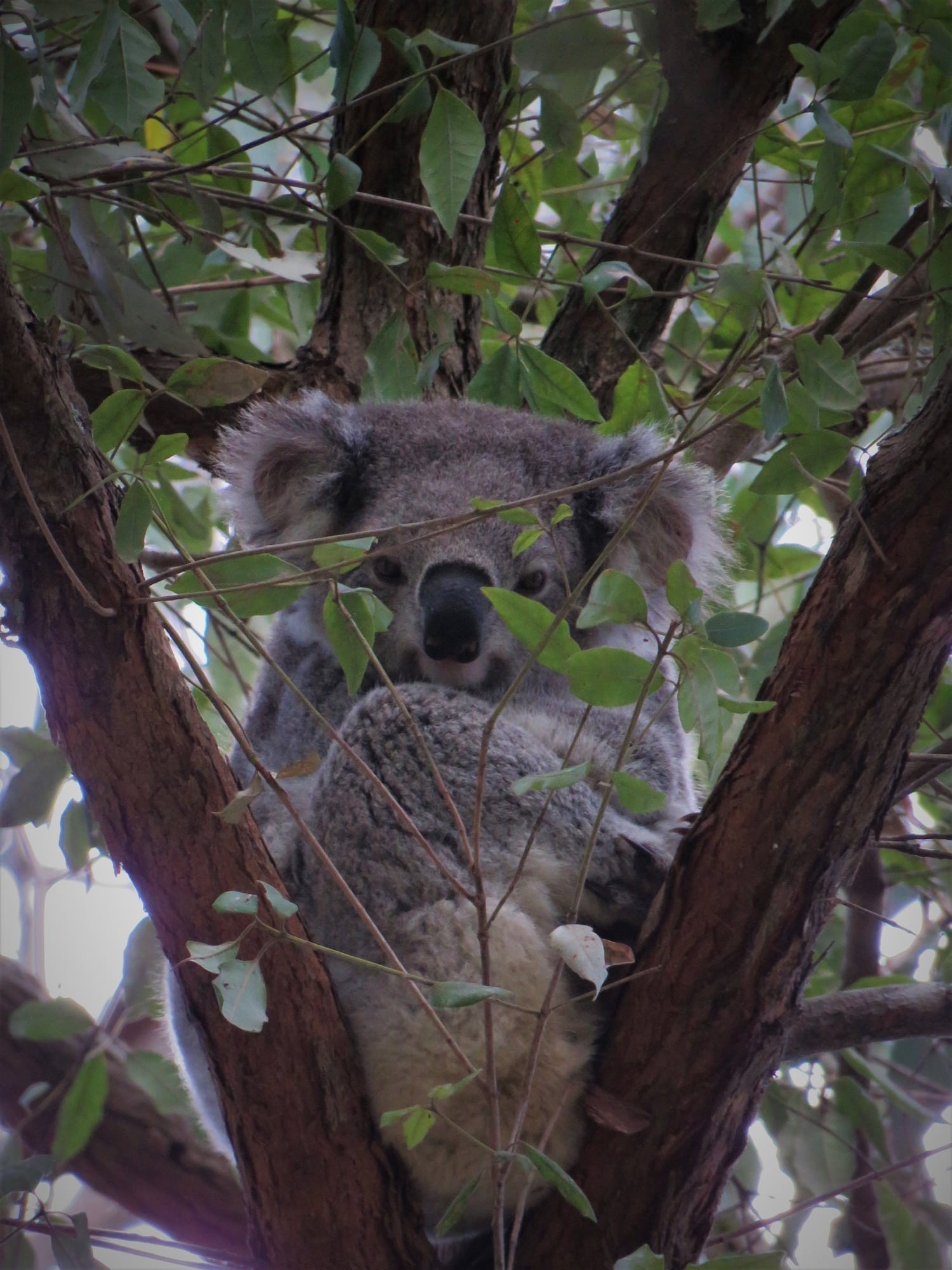
What Does a Paddock Tree Contribute? – Agriculture Vs. Natural Environment
From an agricultural perspective, paddock trees provide a range of important benefits:
- Providing shade and shelter for livestock, thus improving survival rates, and lowering heat and cold stress, resulting in improved yield
- Providing shelter for crops and pastures, reducing evaporation and wind buffeting
- Stabilising the soil with their roots and preventing erosion
- Removing excess groundwater to prevent and remedy waterlogging and salinity
- Recycling nutrients deep in the soil to prevent soil acidification
- Storing carbon and nitrogen
- Improving the moisture holding capability of the soil by contributing organic matter
- Acting as a harbour for insect pest control agents such as birds, reptiles, bats and parasitic insects
- Stabilising farm waterways by holding and using rainwater
- Acting as an indicator of the health of the land
- Improving the overall appearance and value of the land for recreation, tourism and resale value.
From an environmental perspective, the benefits of paddock trees are even greater, providing many important ecological functions and influencing plant and animal life both at a local scale and across the landscape.
Studies have shown that a cooler and wetter microclimate may exist under a given tree due to the concentration of shade and rainfall which is directed towards the ground by the leaves. Water uptake through the root system, and increased infiltration of water into the soil surface can enhance the concentration of soil moisture around the tree, whilst a collection of leaf litter and organic matter will cool the ground and reduce evaporation. Nutrient levels can also be enhanced by this leaf litter, as well as animal manures and the accumulation of nutrients by tree roots. Symbiotic relationships exist between trees and bacteria and fungi, fixing nitrogen in the soil and making it accessible to plants. This microclimate can host a variety of flora and fauna that do not exist outside the range of the paddock tree.
Scattered paddock trees also represent the original Pre-European vegetation, therefore providing important conservation opportunities by acting as a source of seed either directly from the tree, or indirectly by seeds deposited elsewhere by birds and bats. These trees can also act as nurseries by providing favourable conditions for the germination and growth of other plants.
A wide range of animals make use of paddock trees for habitat, including a variety of birds, insectivorous bats, reptiles, mammals, frogs, and invertebrates. They will make use of hollows, branches, leaves, cracks in the trunk and the bark, for breeding, shelter and nesting, and studies have shown the presence of a single tree can double the number of bird species. Hollows can take 50-100 years to develop (depending on the species of tree) and cannot be replaced quickly by planting new trees.
Not only is the paddock tree a valuable source of food itself, through the leaves, flowers, pollen, fruit, bark and roots, but the animals, birds and invertebrates that live in and around the tree are in turn a source of food for other predators. Leaf eating animals such as possums, gliders, and koalas need a range of trees to choose from.
In addition to providing hollows, paddock trees provide nesting and roosting sites for a large range of birds. Often the tallest tree in the vicinity, they are used extensively by birds searching for prey in the paddocks. A birdseye view to be sure! Many birds such as owls and insectivorous species are also beneficial to farmers.
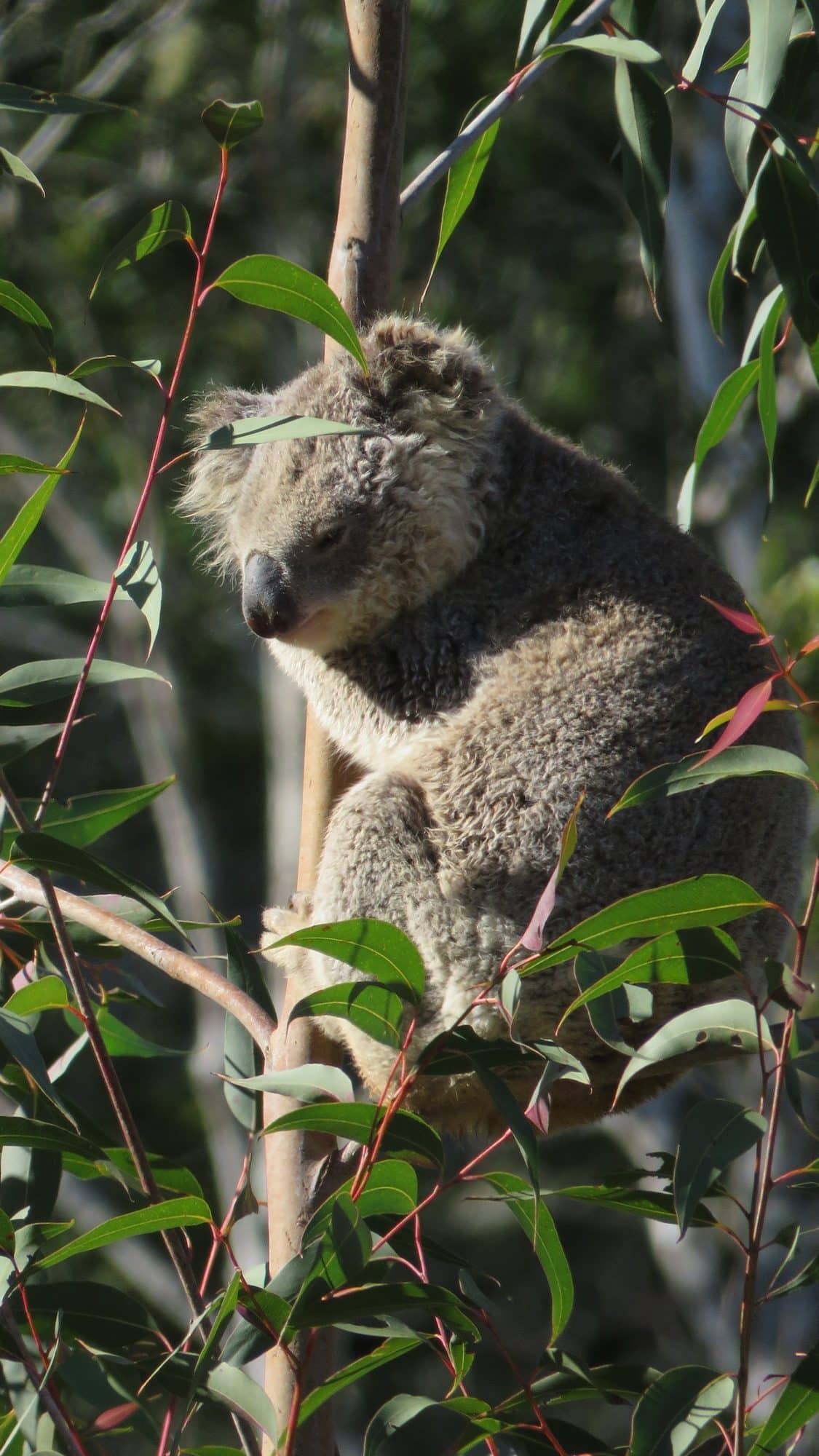
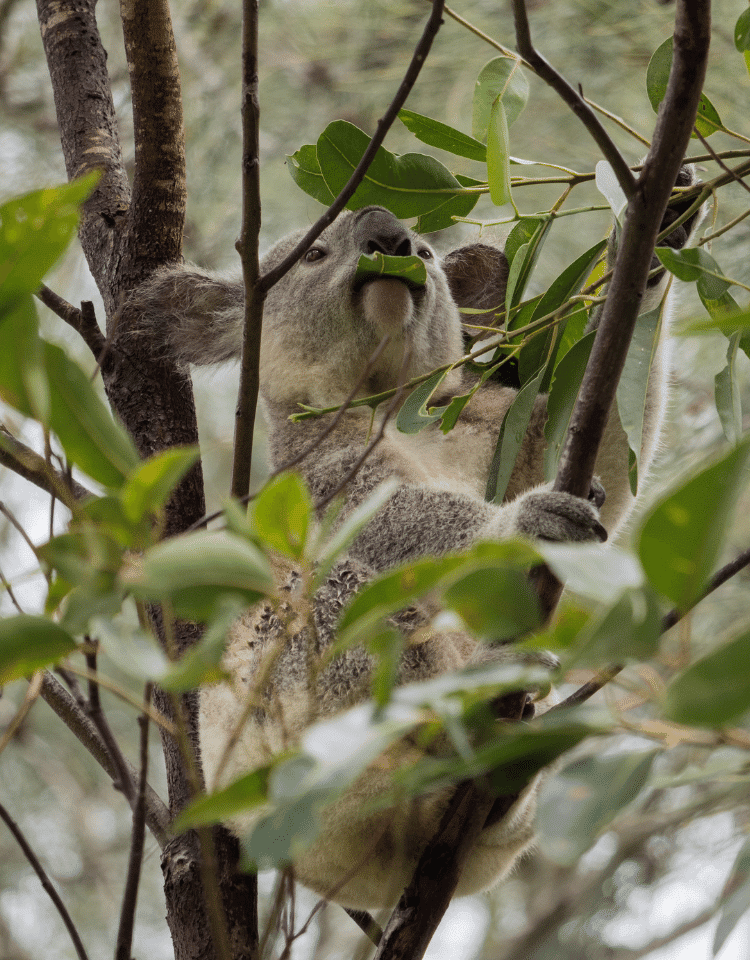
Wildlife relies on the ability to continually move through the landscape, seasonally as well as daily, sometimes over long distances, for purposes of feeding, breeding, nesting, avoiding predators, escaping threats and finding new territories. The ability to safely move across the landscape is integral to maintaining a strong population through increased reproduction and high survival rates. Connectivity is crucial for a well functioning and more resilient ecosystem.
The fragmentation of the landscape through land clearing, agriculture, development, roads, homes and fences threatens this connectivity and fragments the landscape, reducing the ability of wildlife to move. These paddock trees provide important “stepping stones” across the agricultural landscape, for wildlife on the move between areas of remnant vegetation. An important feature of landscapes characterised by scattered trees is that the connectivity remains relatively high for some animals. Koalas in particular make use of paddock trees, during breeding season and as part of their home range. A recent study by researchers from the University of Sydney used tracking collars on koalas to trace their movements across the agricultural landscape. They found koalas took great risks to cross cleared land to repeatedly visit paddock trees. These farmlands were originally chosen due to their soil fertility and water, resulting in paddock trees which are rich in nitrogen. The study showed koalas stayed longer in these trees than they did in other trees. This study demonstrated the importance of paddock trees and the need to reconnect them to nearby bushland.
What is Happening to Paddock Trees?
Right across Australia, we are seeing a decline in the number of paddock trees. This has been estimated to be as high as 2.5% per annum, meaning old paddock trees could disappear within the next 100 years, resulting in millions of hectares of farmland becoming treeless. As paddock trees and small clumps of trees account for a significant amount of cover in agricultural landscapes, the impact will have major consequences. The fact that there is little regeneration of paddock trees will only exacerbate this decline.
There are many reasons contributing to this decline:
- Age of the remaining trees – Eucalypts have a maximum lifespan of 400-500 years (depending on species and location within Australia). Large trees that were retained after clearing the land 100-150 years ago or more may now be reaching the end of their lives.
- These trees are subject to a high rate of mortality due to agricultural practices including stubble burning, elevated nutrients, insect attack, salinity and soil compaction. Fertilisers and herbicides change nutrient levels and spray drift can kill off seedlings. Seed germination rates can also be reduced in highly fertilised soil.
- Continued land clearing continues to be a threat as landowners remove trees that are unhealthy, or in the way of cultivation and harvesting. Firewood collection is another risk.
- Eucalypts do not generally regenerate where they are grazed or cultivated, so there are no replacements ready to take over when the main tree dies.
- Climate change – a whole range of effects due to climate change can affect vegetation – colder winters, hotter summers, droughts and increased rainfall to name a few.
- Livestock directly contribute to tree decline through ringbarking and eating or trampling seedlings. Cattle camps under paddock trees cause changes in soil pH, compaction, fertility and can lead to root damage and erosion.
- Dieback – generally recognised as a combination of factors, dieback is the gradual deterioration in the health of a tree, often leading to death. It is a response to stressors in the environment including drought, insect attack, disease, parasites, nutrient toxicity, agricultural practices and climate change.
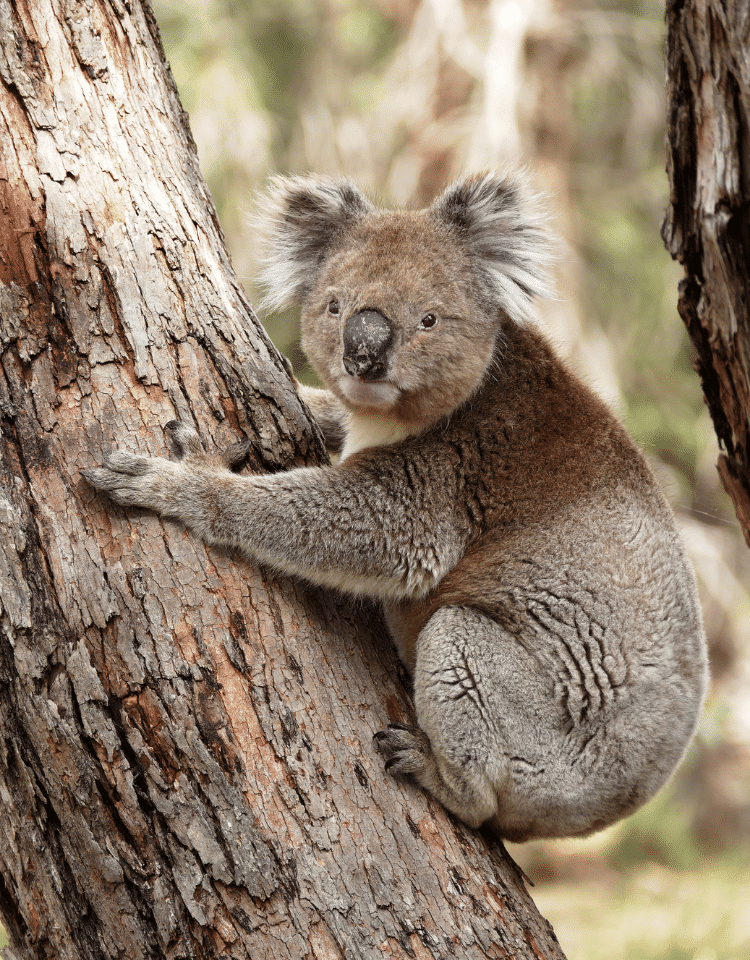
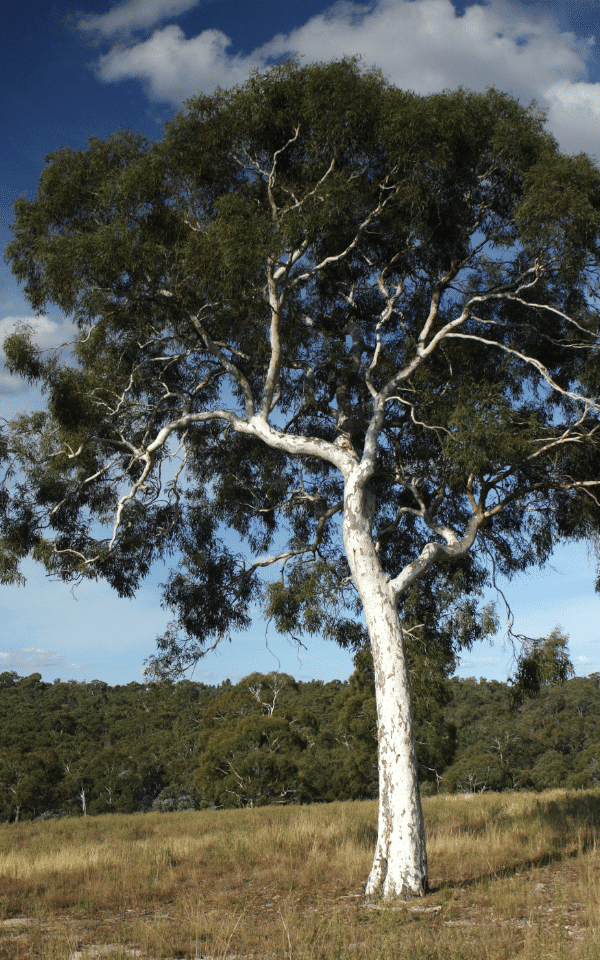
What Can We Do?
Paddock Trees need our help now! There’s a lot we can do to assist their survival and ensure the next generation of trees are ready to take over the role. Protecting existing trees, and succession planning is the priority, and this can be done by:
- Fencing a large area around trees on a permanent or long term basis to allow for natural regeneration to occur.
- Exclude livestock through better paddock management, short term spelling and reduced stocking rates to give regeneration a chance to begin.
- Do not remove fallen limbs, leave them under the tree.
- Avoid fertiliser and cultivation close to the tree
- Control weeds
- AVoid herbicide drift onto the tree
- USe fire breaks around the tree if stubble burning
- Retain other features such as logs, rocks, stumps and fallen timber as habitat
What Does This Project Involve?
The Koala Paddock Tree Project is currently recruiting landowners interested in koala conservation, and who have a paddock tree they would like to see protected. Trees will be assessed for suitability for the project and if chosen, landowners will be provided with electric fencing materials to construct an area of approx 50m x 50m around the tree. This fencing will remain for three years, excluding livestock whilst allowing access by native animals. The landowners are asked to regularly check the condition of fencing, control major woody weeds (eg. lantana) and submit regular photographs from a fixed photopoint. If the fence is needing repairs or maintenance, materials will be provided.
Initially baseline data will be recorded for the sites, including information on the paddock tree species, size and overall health of the tree, usage by wildlife, and data on the surrounding vegetation and landscape. Some of the sites will then be selected for further monitoring and data collection annually over three years for comparison against the baseline data. A few sites will be selected to receive plants, to be planted by the landowner in the project area, whilst some sites chosen will be left as they are. This is so further comparisons can be made, between planted/non-planted sites, and fenced/non-fenced sites.
One of the main aims of the project is to determine the extent and success of natural regeneration without any intervention other than excluding livestock. Cattle use paddock trees for shade and shelter, for scratching their itches, and sometimes for food. Seedlings which do manage to appear are quickly eaten or trodden on. The soil around the tree becomes compacted, exposed roots are damaged, and the soil pH and nutrients change due to the urine and manure. We hope to demonstrate that excluding livestock from around the tree is enough for natural regeneration to occur over time from the existing seedbank, without the need for planting and ongoing maintenance. It is also hoped to determine whether the overall health of the paddock tree improves.
Whilst planting out sites is popular and can produce worthwhile results, it is expensive in terms of plant production, time spent planting, and follow up such as watering and weed control. Natural regeneration which occurs from the existing seedbank is cost effective, and often produces a more natural mix of native vegetation, and stronger, more resilient plants. Parent tree seedlings, wattles and small shrubs are usually the first to establish, generally outside the dripline of the parent tree, and these shade out pasture grasses, providing an environment suitable for the native groundcovers, vines, herbs and forbs to flourish. Eventually the natural structure of the bushland will start to reappear, along with the wildlife. The project hopes to create up to 15 hectares of bushland by the end of the three years.
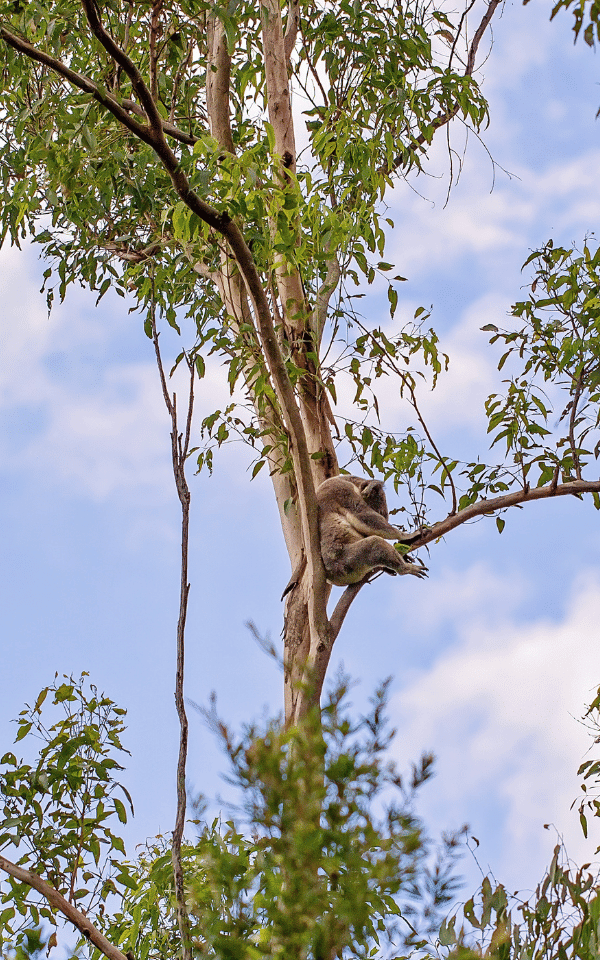
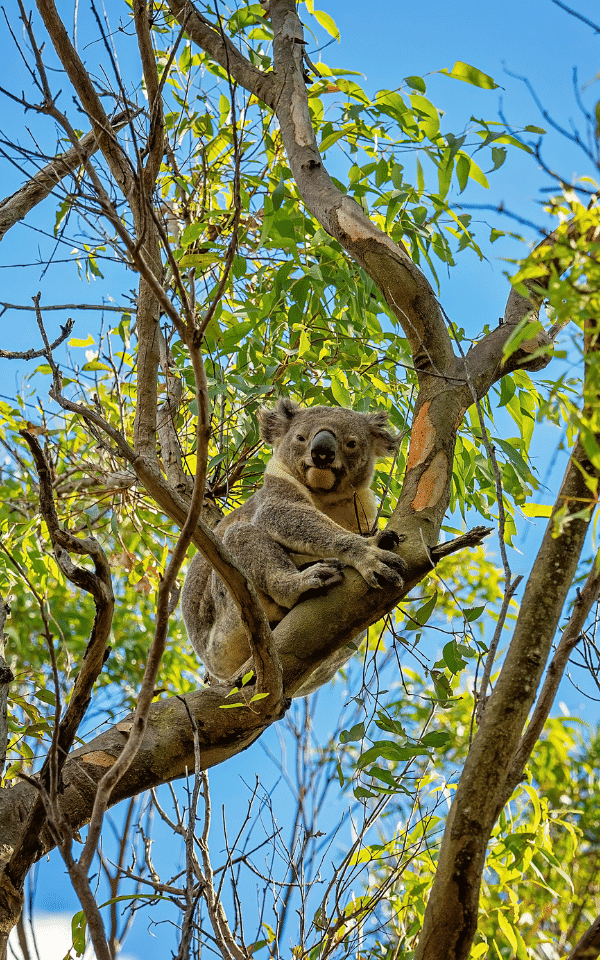
Encouraging succession planning is another aim of this project: paddock trees are dying right across the country, from a variety of reasons, and landowners are encouraged to plan for their replacement. If we wait until these trees are dead, a planted seedling is not going to provide the same functions of shade, shelter, food and habitat. Tree hollows suitable for wildlife take anywhere from 50-100 years to form, depending on the tree species; eucalypts take 3-5 years or more before they can be utilised by koalas; planted trees take at least 5 years before they are mature enough to withstand interactions with livestock. Meanwhile the planted seedling is vulnerable to extreme weather, the effects of climate change, bushfires/grassfires, browsing by wildlife, damage by livestock, and agricultural practices such as slashing paddocks, cultivation, and weed spraying. If we can start now to create small areas of bushland around these paddock trees, providing protection and improving and extending their health, encouraging natural regeneration and providing replacements for the future, we will be going a long way toward ensuring these valuable assets are available for future generations of both landowners and koalas.
Improving connectivity across the landscape is another aspect of the project. Koalas need to cross open paddocks in areas where the connectivity between areas of bushland has been lost, and are extremely vulnerable whilst on the ground, facing vehicle strikes, dog attacks, and injury by livestock. Cattle are often very keen to investigate other animals in their paddock, but will often charge or kick out, causing injury. This project also aims to recreate this connectivity, by choosing paddock trees that are between areas of known koala habitat, thus creating stepping stones across the agricultural landscape, and a safe refuge for koalas and other wildlife.
How you can participate:
If you are a landowner in the MidCoast area, and you think you have a paddock tree suitable for the project, please complete an Expression of Interest form which can be found here:
https://docs.google.com/…/1FAIpQLSe_Iorf2DsrEl66TQ…/viewform
For more information, contact MidCoast 2Tops:
